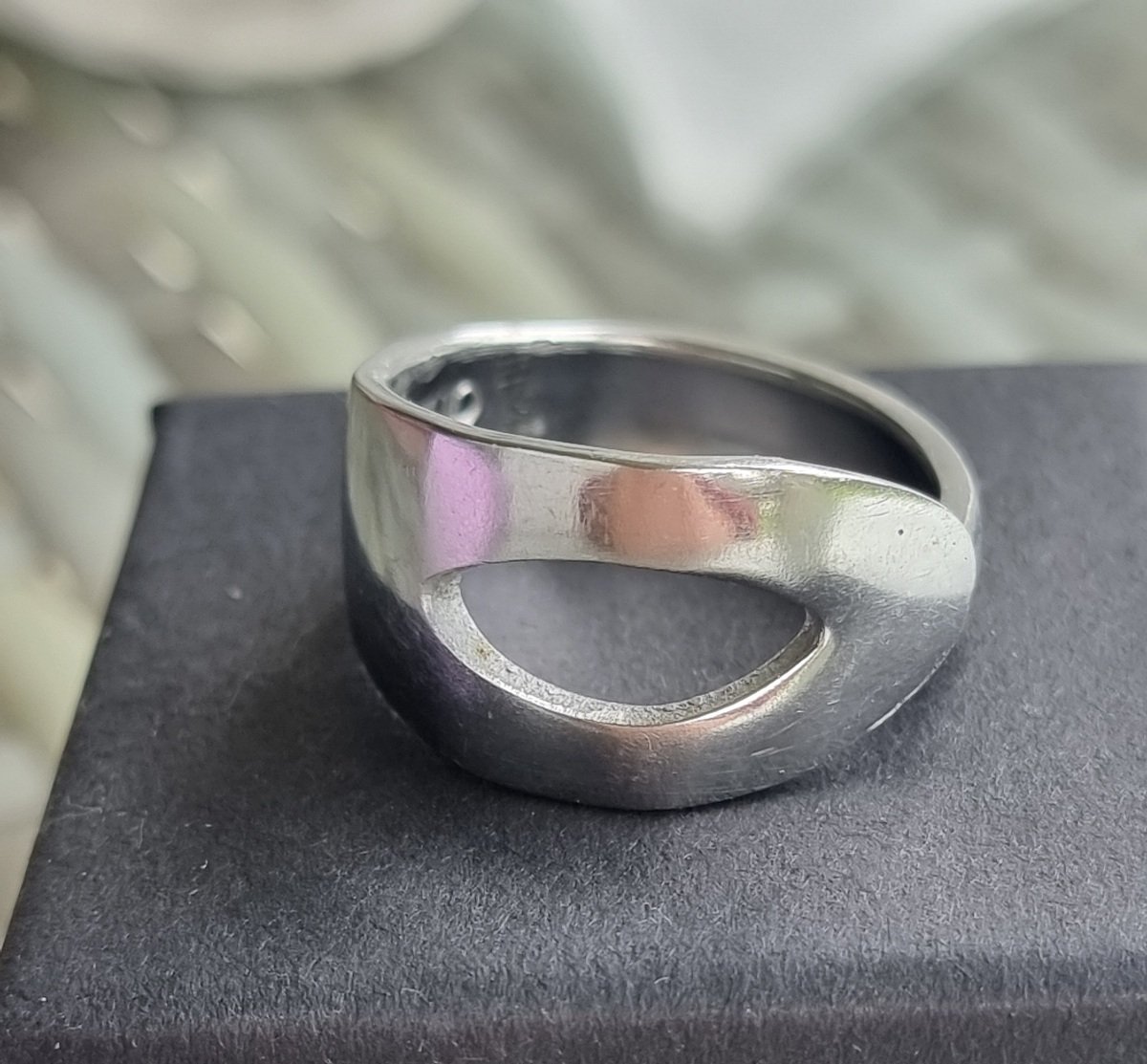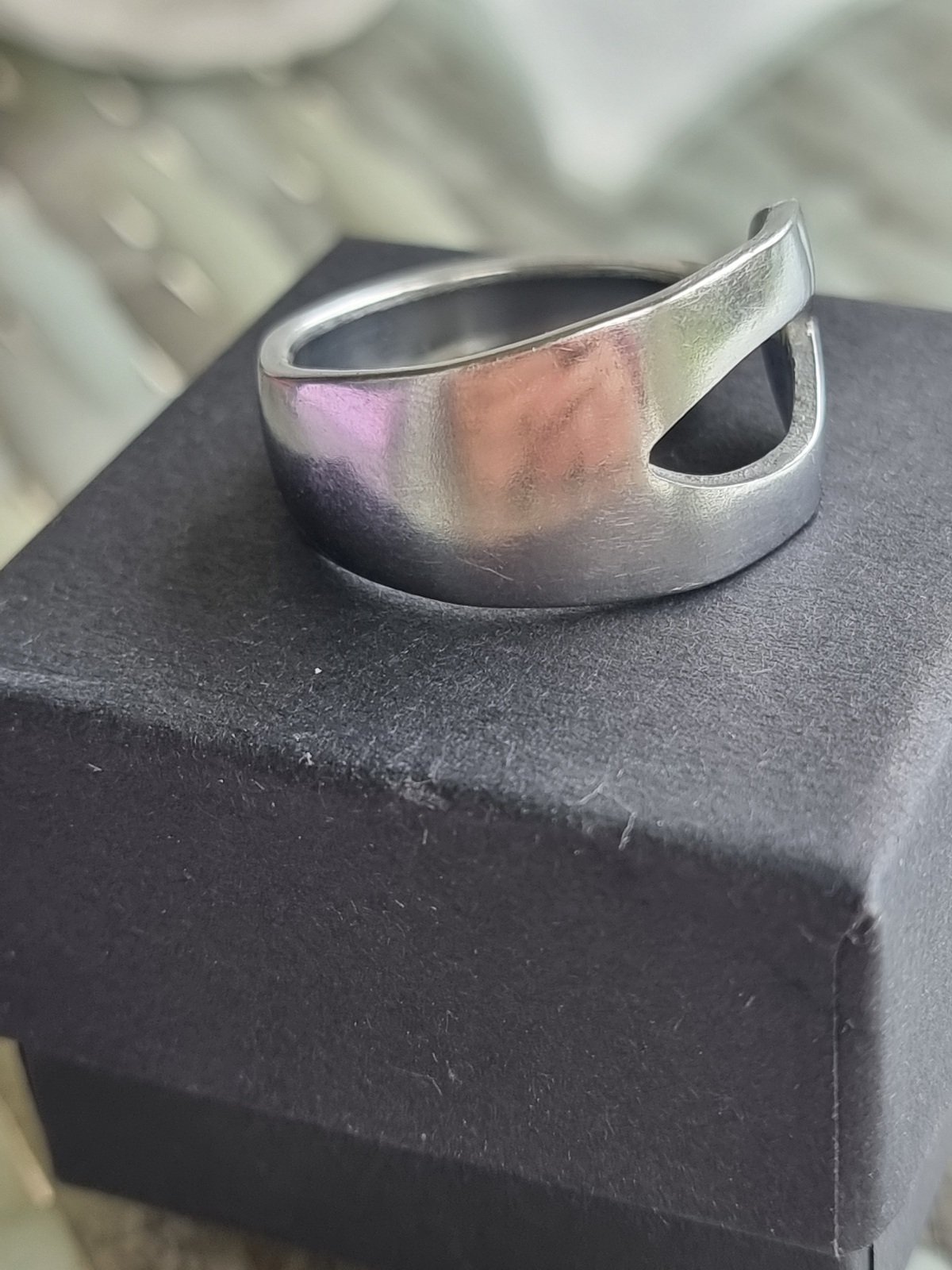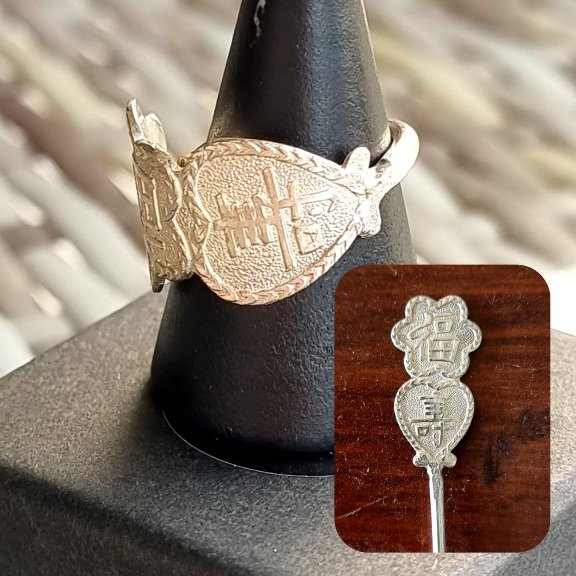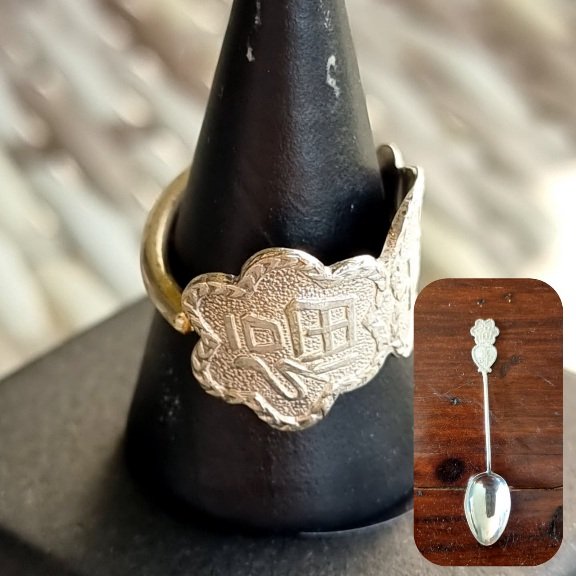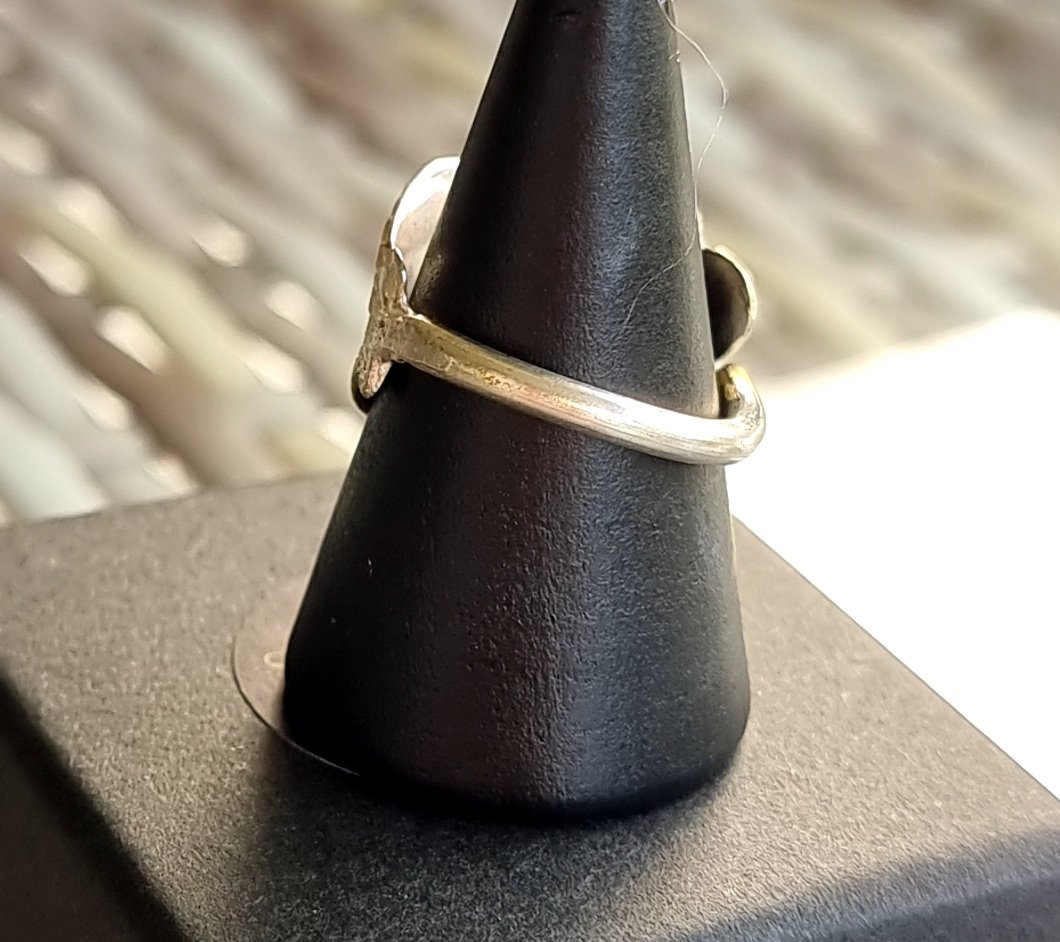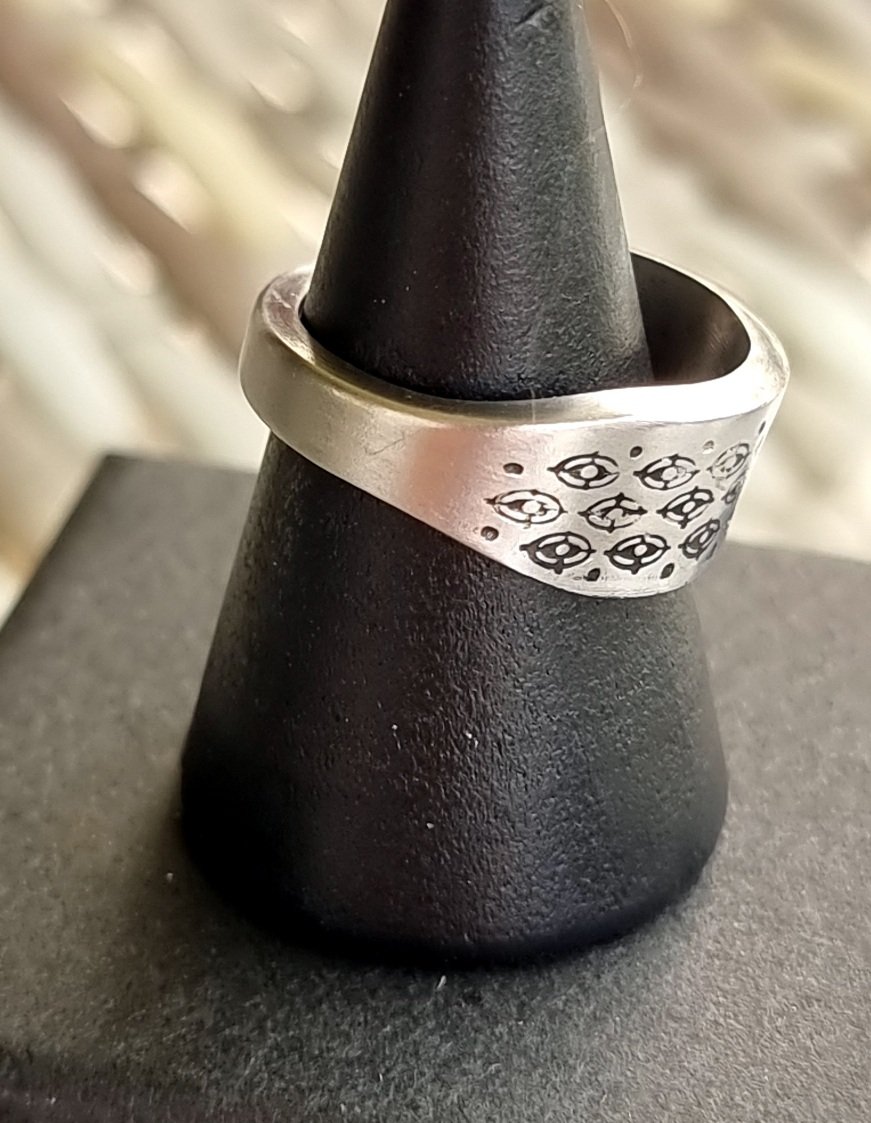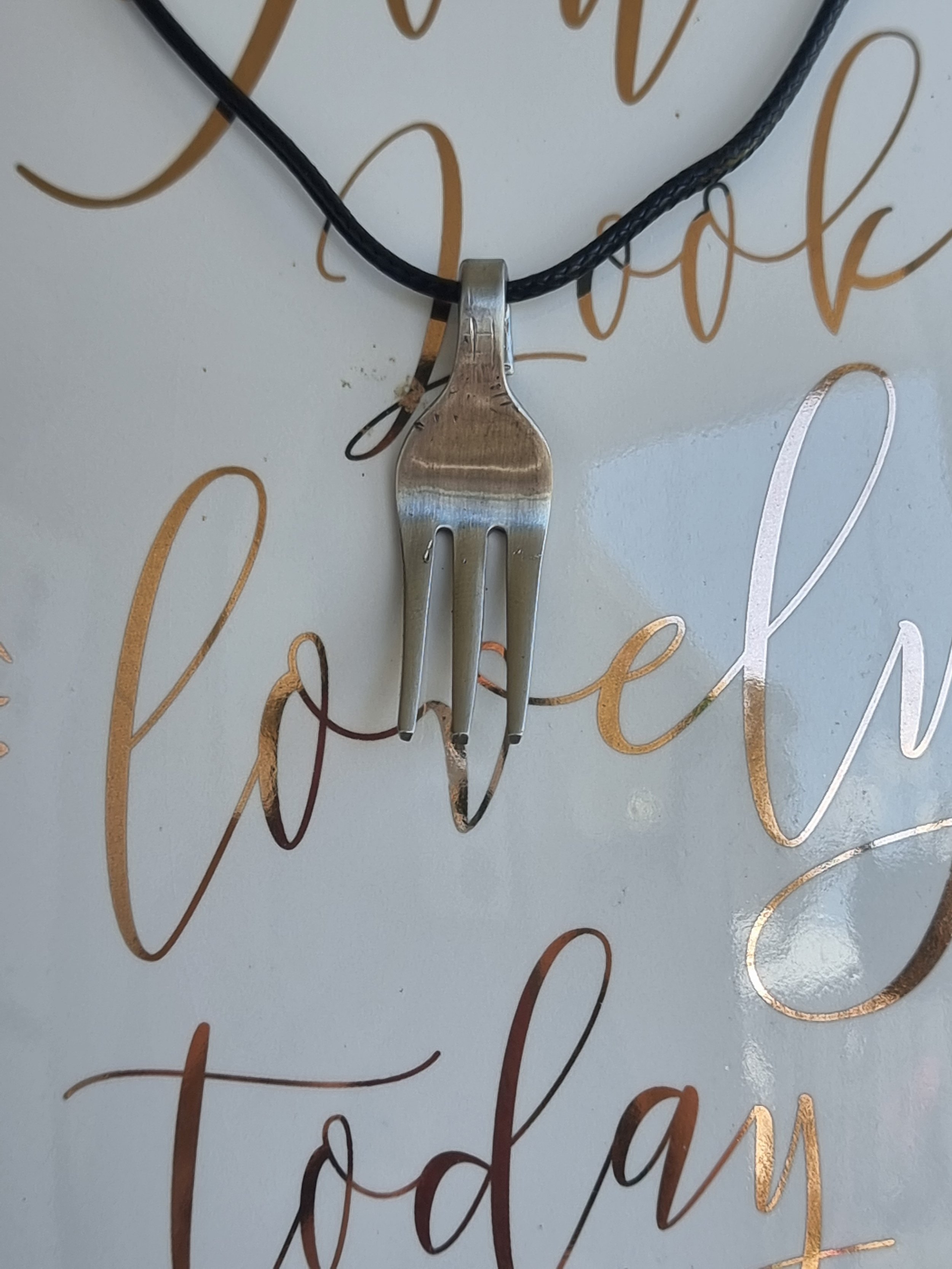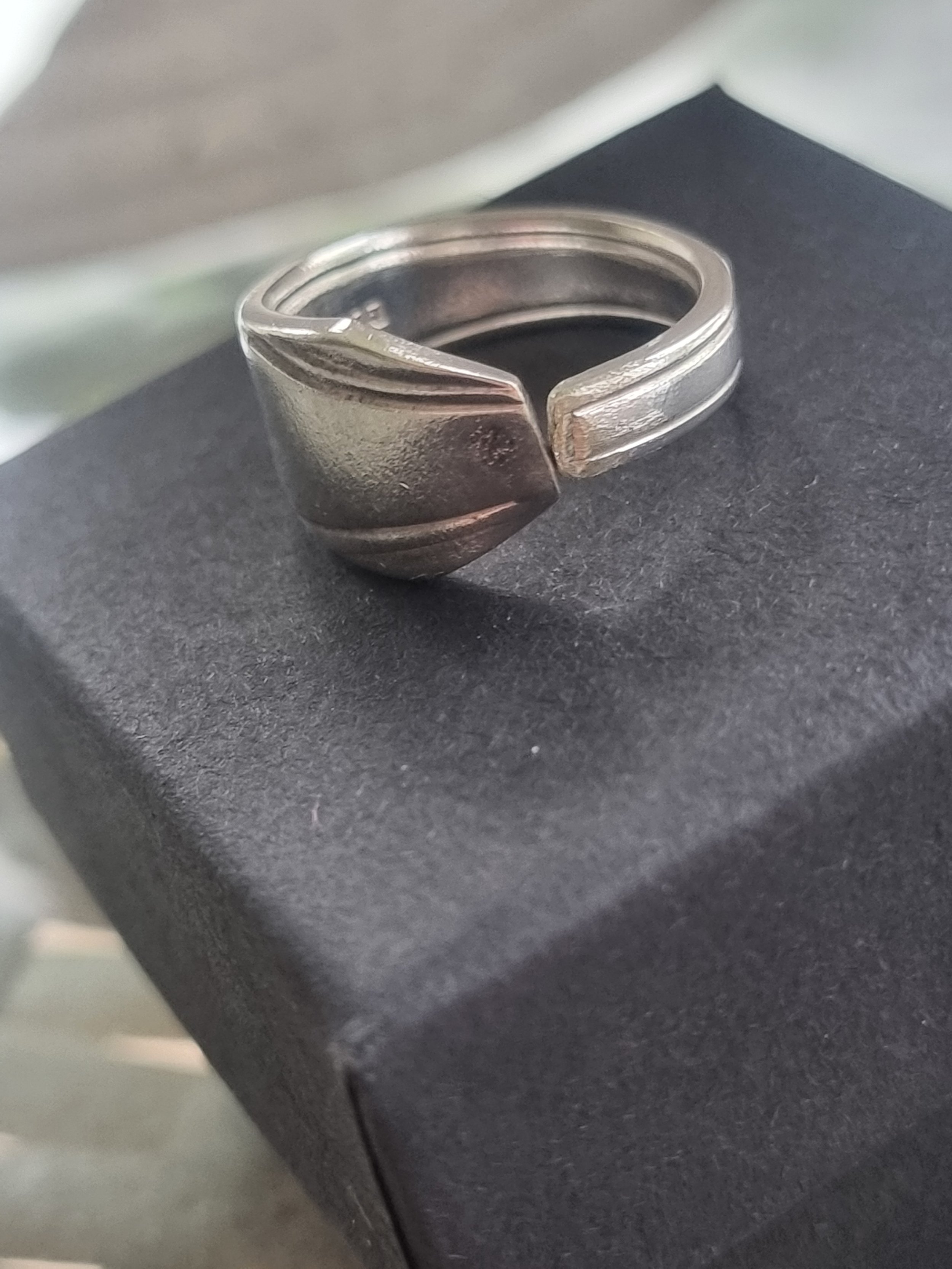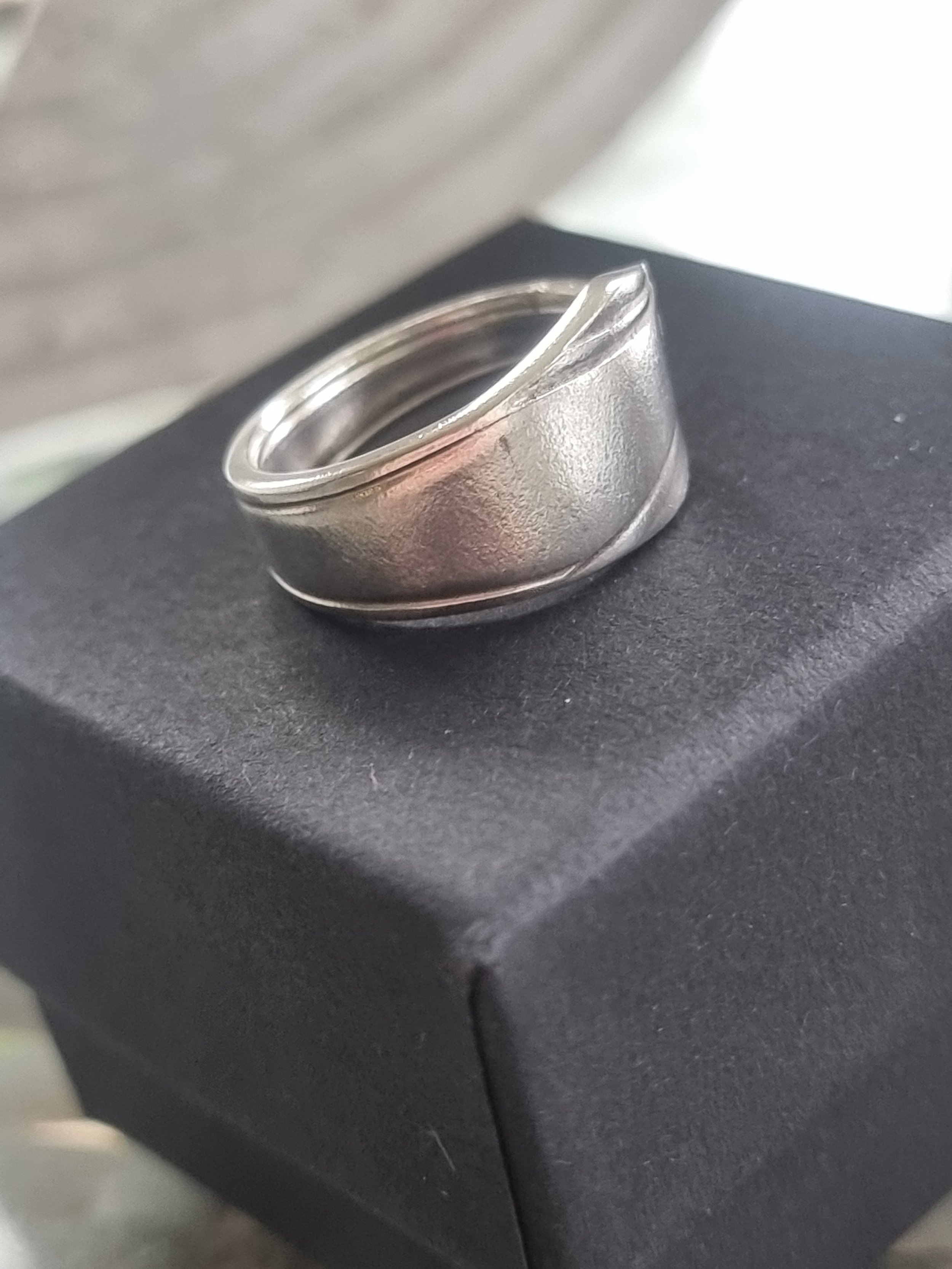
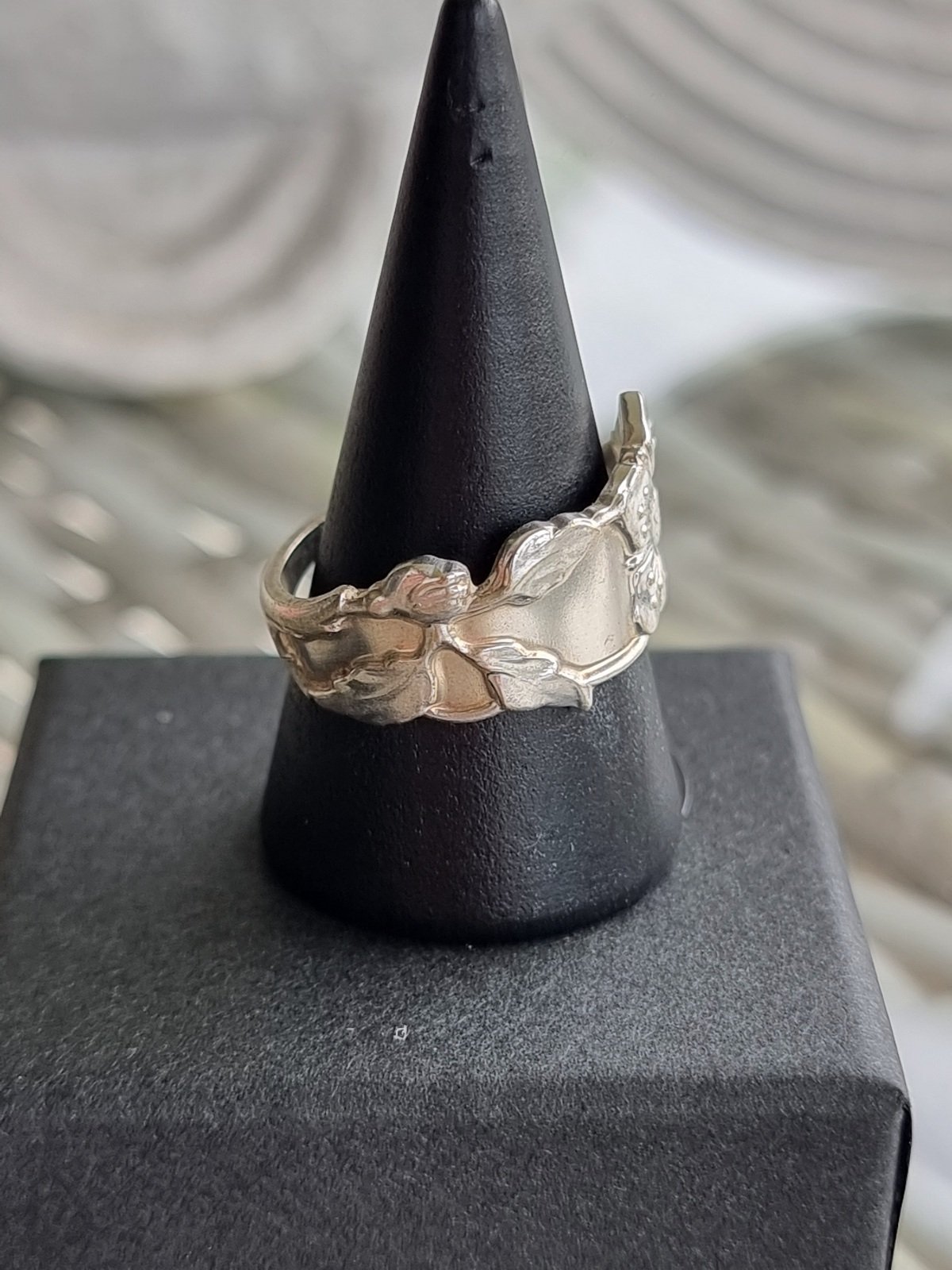
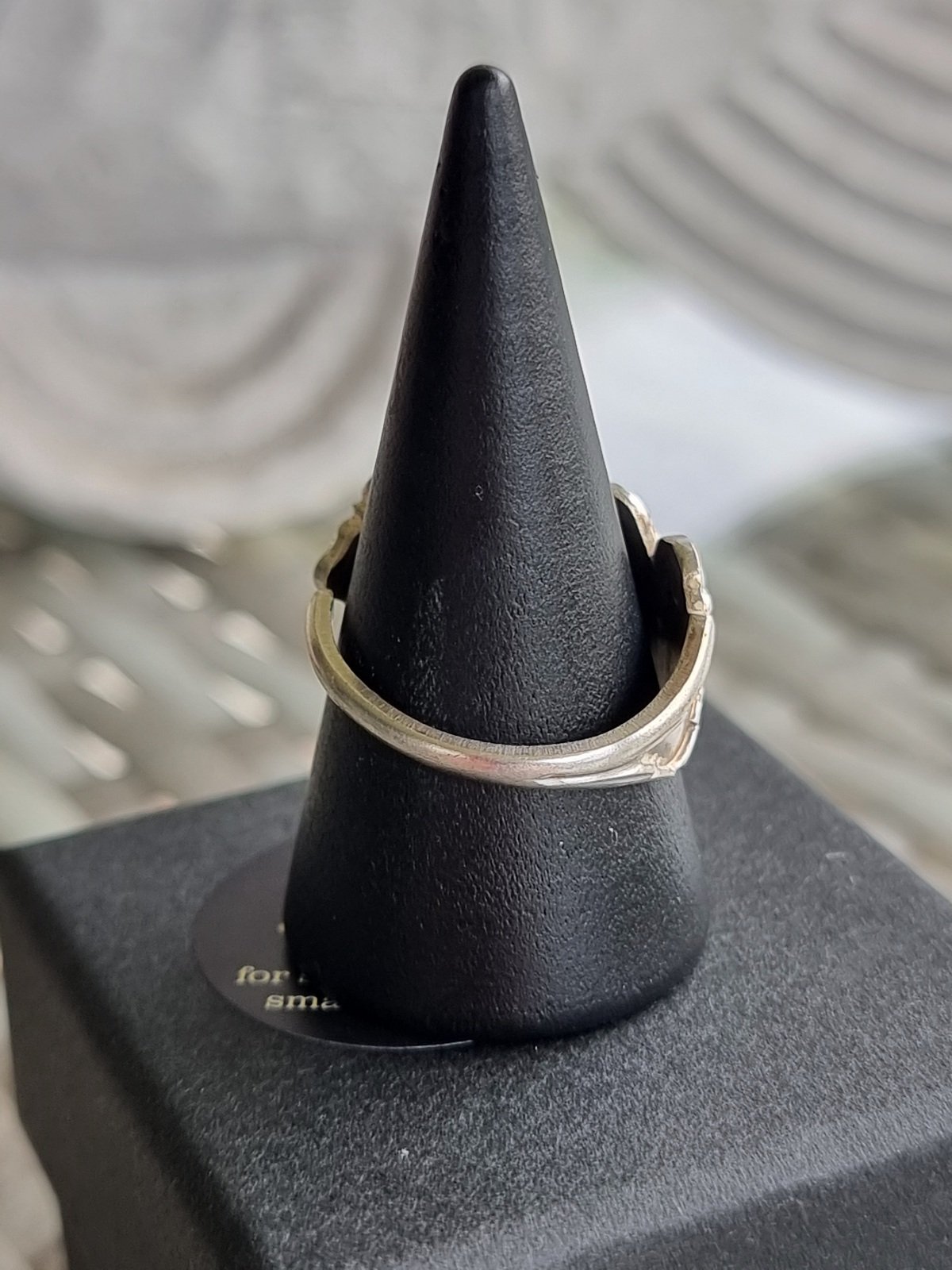
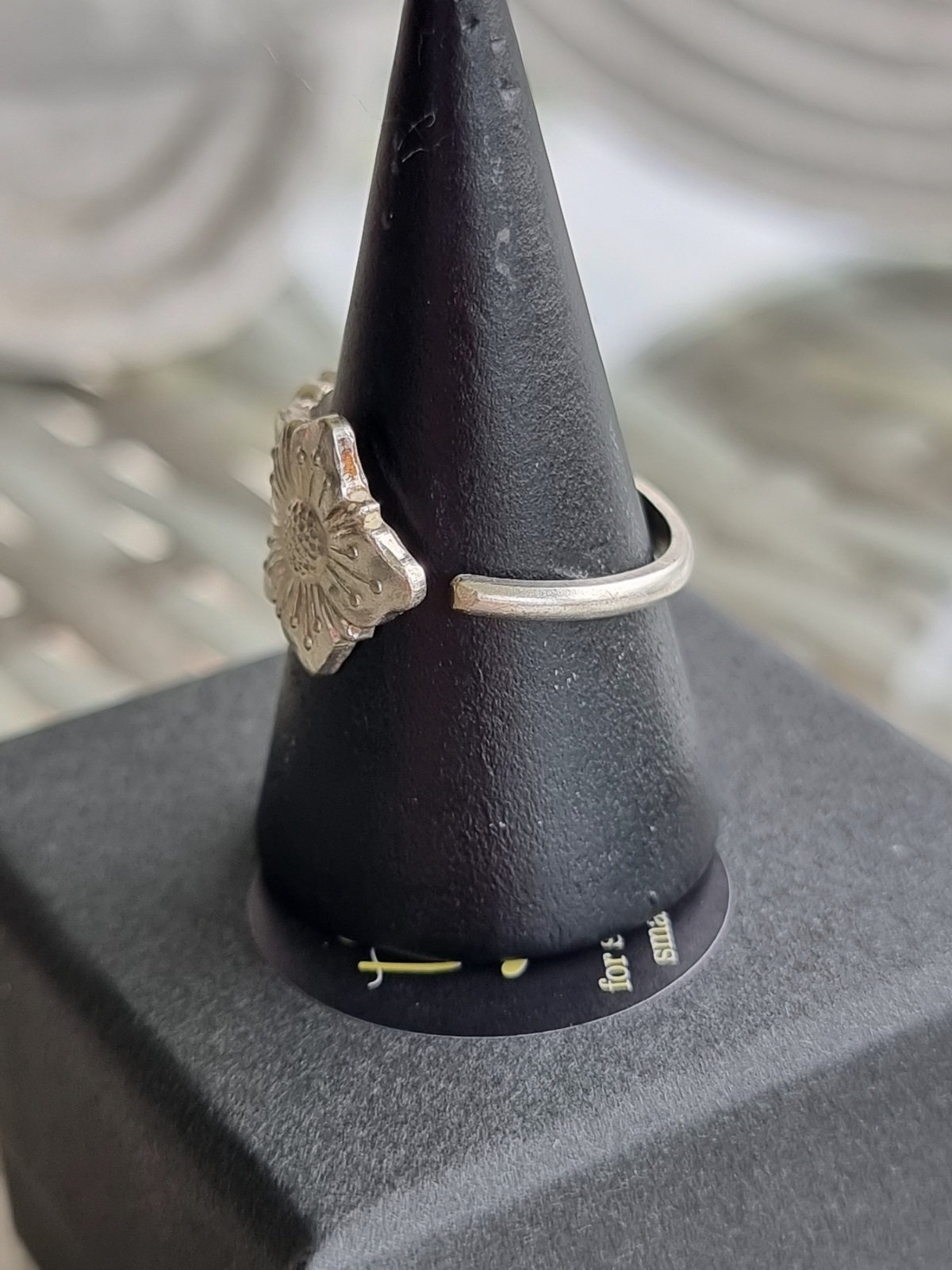
Flower Band Ring
"ALPACA SILVER" band ring flower design ✨️
Created from a teaspoon
Approx size 11
Very delicate,light to wear.
Things are not always what they seem. The name “Alpaca Silver” would make most people think of a silver that occurs in the Andes mountains where the alpacas roam, or, as some have thought, is made from the furry creatures themselves (Fortunately, this is not the case).
The Origins of Alpaca Silver
Contrary to what its name suggests, alpaca silver has nothing to do with alpacas or silver. It is based off a Chinese formulation of nickel silver (a type of copper alloy containing nickel and zinc) named paktong, translated in English to “white copper.” Nickel silver has a long history, tracing its origins all the way back to the Qing Dynasty in China. During the Qing period, nickel silver was smuggled into the East Indies in direct opposition to a government ban on export of the alloy.
Europe came to adopt paktong, even referring to the metal by its original Chinese name. Germany began to imitate paktong in 1750, producing several offshoots. Alpaca silver, also known as German silver, was developed in 1823 as the result of a German competition held with the goal of developing an alloy that had the most visual similarity to silver. Its trademark name Alpacca became widely known in Northern Europe as a source of nickel silver.
Free Postage
"ALPACA SILVER" band ring flower design ✨️
Created from a teaspoon
Approx size 11
Very delicate,light to wear.
Things are not always what they seem. The name “Alpaca Silver” would make most people think of a silver that occurs in the Andes mountains where the alpacas roam, or, as some have thought, is made from the furry creatures themselves (Fortunately, this is not the case).
The Origins of Alpaca Silver
Contrary to what its name suggests, alpaca silver has nothing to do with alpacas or silver. It is based off a Chinese formulation of nickel silver (a type of copper alloy containing nickel and zinc) named paktong, translated in English to “white copper.” Nickel silver has a long history, tracing its origins all the way back to the Qing Dynasty in China. During the Qing period, nickel silver was smuggled into the East Indies in direct opposition to a government ban on export of the alloy.
Europe came to adopt paktong, even referring to the metal by its original Chinese name. Germany began to imitate paktong in 1750, producing several offshoots. Alpaca silver, also known as German silver, was developed in 1823 as the result of a German competition held with the goal of developing an alloy that had the most visual similarity to silver. Its trademark name Alpacca became widely known in Northern Europe as a source of nickel silver.
Free Postage


